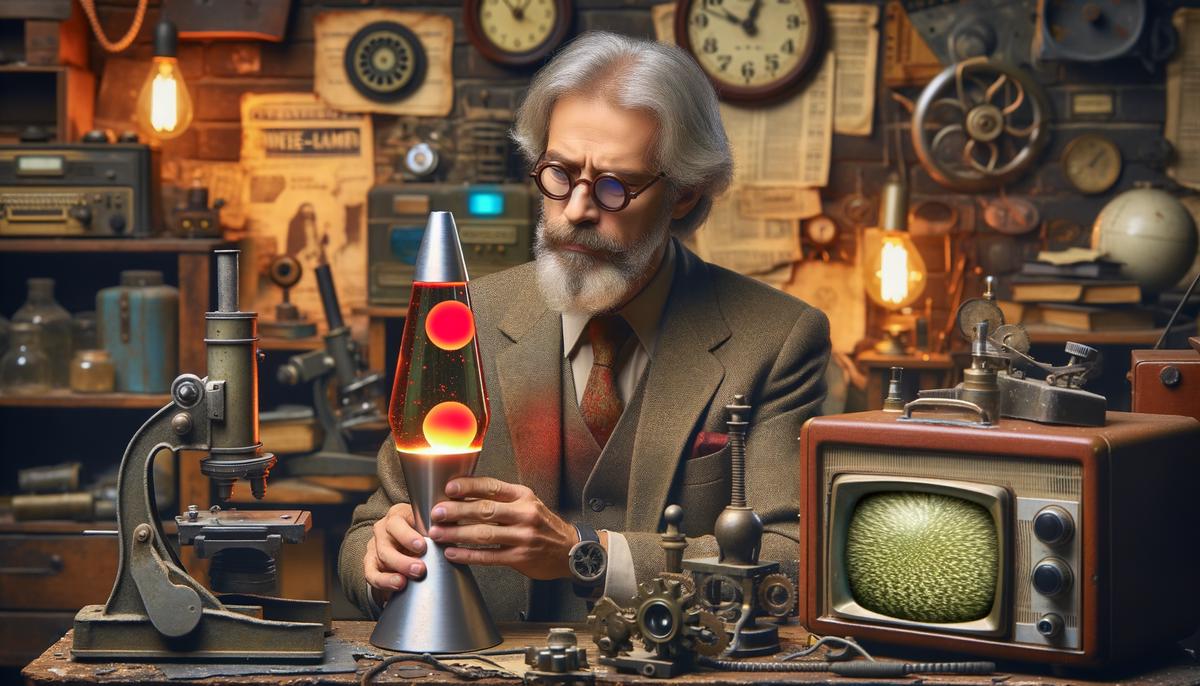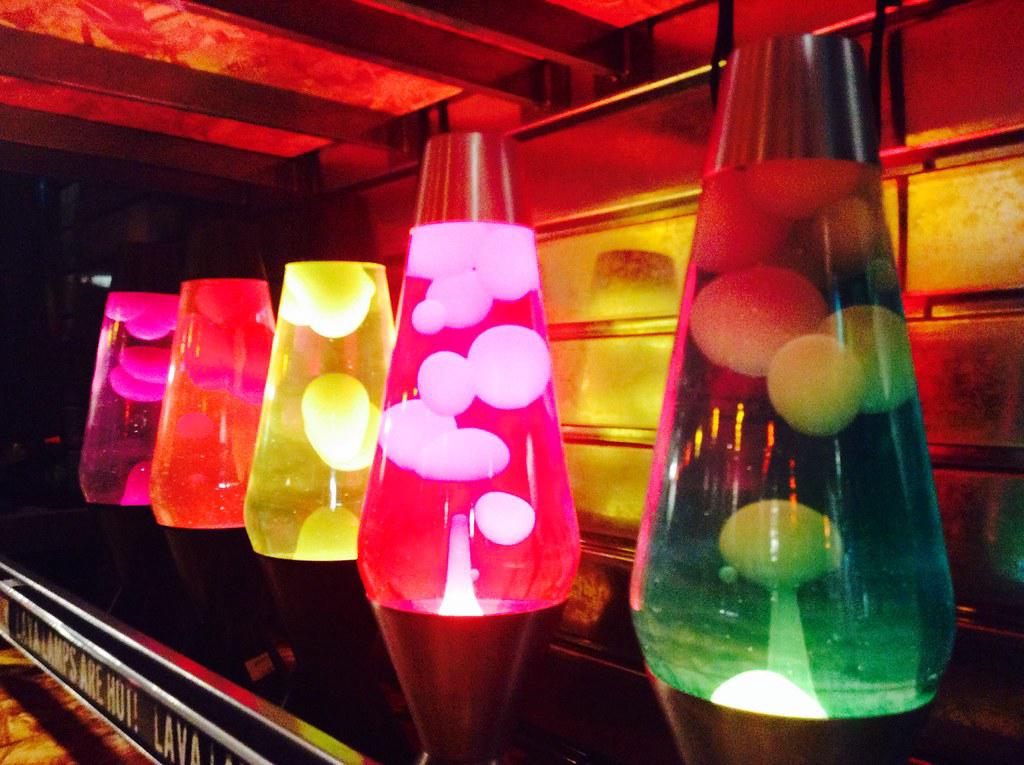Inspiration and Invention
Edward Craven Walker, an eccentric British inventor, stumbled upon inspiration in the unlikeliest of places—a pub counter. There, he spotted an egg timer made from a cocktail shaker filled with bubbling liquids. This odd sight sparked a creative flame that would soon light up the '60s.
Walker, a man of diverse interests from nudist films to piloting planes, spent fifteen years perfecting his vision. He tinkered tirelessly with wax and water, seeking to recreate the captivating motion he'd seen in that pub-side oddity. His goal? To create a lamp that would not just illuminate a room, but mesmerize the mind.
In 1963, Walker's efforts paid off with the birth of the Astro Lamp—a glass bottle containing colorful, heated wax blobs set in motion by a simple light bulb. This funky fixture effortlessly became a touchstone of countercultural identity, reflecting a generation's desire to break free from the mundane.
The lava lamp wasn't just a light source; it was a movement in a bottle, inviting onlookers to pause and appreciate the small magic of fluid motion.

Cultural Impact in the 1960s
The groovy '60s were humming with rebellion and self-discovery, and the lava lamp fit right in. It blazed its own trail across an electrified landscape of psychedelic vibes and countercultural coolness. In a decade defined by peace signs and bell-bottoms, the lava lamp served as a glowing beacon of the era's artful rebellion.
As flower children filled the streets with chants of love and anti-war sentiments, the lava lamp flickered in the background. Its hypnotic, bubbling display mesmerized youthful souls searching for meaning beyond the conventional. The lamp's unruly blobs embodied the '60s ethos itself: unpredictable, constantly changing, and gloriously free.
Icons of the age, from Lennon to Bowie, adorned their creative spaces with these lamps. Soon, you could find them in the dens of rebels and artists alike, each a testament to the fervent ideals of the time. The funky fixture became a must-have accessory in dorm rooms and basements, an emblem of individuality.
As The Beatles crooned about revolution and Janis Joplin wailed her truths, the lava lamp's soft glow invited introspection and conversation. It became intertwined with the visual art and music of the decade, often appearing alongside works that sought to transcend traditional boundaries.
This brilliant little creation, with its whimsical flow and dash of unpredictability, summed up an entire generation's quest for authenticity. It was a protest against the ordinary—a gentle, glowing nod to the power of imagination to disrupt and delight.
Evolution and Revival
While the psychedelic '60s were the lava lamp's heyday, its story didn't end when bell bottoms went out of style. Like the blobs within, lava lamps have experienced their own ebb and flow in popularity—a testament to their enduring appeal.
As the '70s mellowed out and disco balls took center stage, demand for these trippy light fixtures cooled. But just when you thought the story had ended, the lava lamp pulled a comeback!
Fast forward to the '90s. A wave of nostalgia, the retro kiss of Austin Powers, and youthful spirits yearning for a dash of grooviness brought the lava lamp back into the limelight. It was ready to dazzle a new generation with its unpredictable charm.
Behind the scenes, innovation kept things fresh. Manufacturers jazzed up designs with new colors and materials, while improvements in the wax-and-liquid mixture made the movement even more mesmerizing. Marketing gurus rebranded the lava lamp as the ultimate symbol of hipster cool for a new era.
Those whimsical blobs that wowed flower children now captured the fascination of Gen Xers and millennials alike. Retailers couldn't stock 'em fast enough—Mathmos and Lava Lite saw sales figures bubble up once more.
The lava lamp's resurgence speaks to our universal love for a bit of mystery and magic in our lives—a groovy reminder that color, creativity, and soul never go out of style.

The lava lamp, with its whimsical flow and vibrant glow, stands as a testament to the enduring power of imagination. From its psychedelic origins in the '60s to its nostalgic revival in later decades, it continues to captivate hearts and minds. This iconic light fixture is more than just a decorative piece; it's a symbol of creativity that transcends time, reminding us all that a touch of magic can brighten any era.
- Walker EC. The Astro Lamp: A Revolution in Lighting. London: Crestworth Ltd; 1964.
- Granger C. Mathmos: The Story of Lava Lamps. Poole: Mathmos Press; 2003.
- Jones R. Counterculture Icons: From Woodstock to Lava Lamps. New York: Vintage Books; 1998.
- Smith DG. Display Devices. US Patent 3,570,156. March 16, 1971.
- Horner S. The Psychology of Lighting Design. Brooklyn: Pratt Institute Press; 2010.
